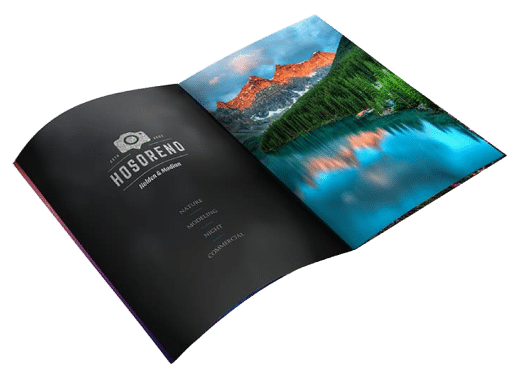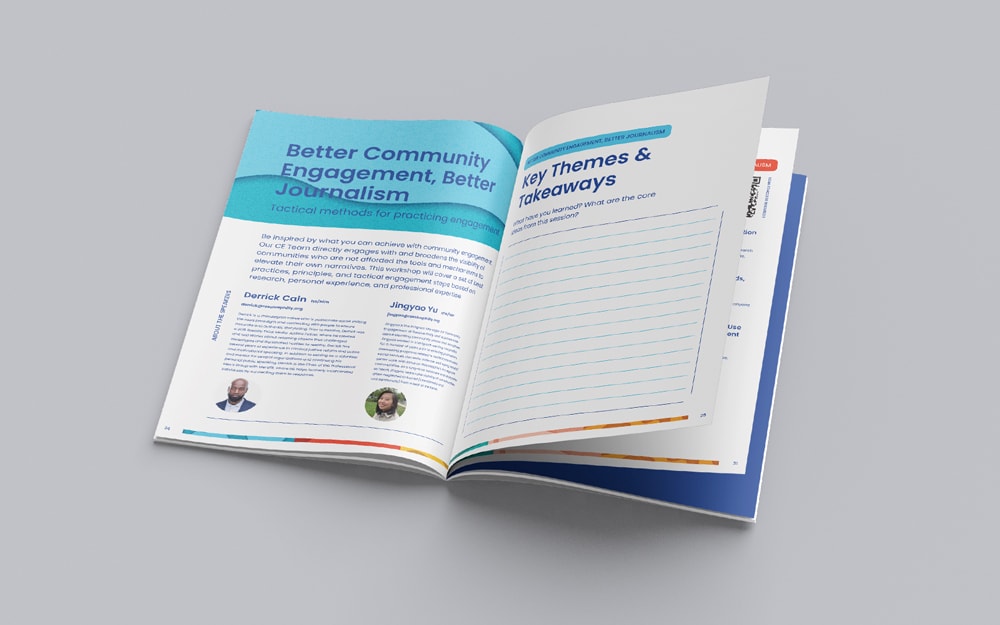The Pros and Cons of Digital vs. Offset Booklet Printing
The Pros and Cons of Digital vs. Offset Booklet Printing
Blog Article
The Vital Guide to Recognizing Booklet Printing Options and Techniques
The procedure of brochure printing entails several considerations that can greatly impact the last item. From choosing the proper format and dimension to understanding the nuances of binding methods, each choice plays a vital role. Furthermore, elements such as paper stock and printing techniques more influence the performance of the pamphlet. As one navigates these options, it comes to be essential to realize how they adjoin and what that indicates for the overall end result.
Comprehending Brochure Sizes and layouts
When thinking about pamphlet printing, understanding the various layouts and sizes readily available is essential for achieving the wanted presentation. Pamphlets can be produced in countless styles, including saddle-stitched, spiral-bound, and perfect-bound, each offering distinctive advantages. Typical dimensions range from conventional letter (8.5 x 11 inches) to smaller choices like A5 (5.8 x 8.3 inches), enabling versatility based upon content and target audience.Selecting the appropriate size can affect both the layout and visitor involvement. Bigger sizes may match visually driven material, while smaller sized styles might be more user-friendly and mobile. Additionally, the variety of web pages affects the option of binding method, as thicker pamphlets might require stronger bindings. Eventually, recognizing these aspects enables an extra customized approach, making sure that the end product straightens with the intended message and aesthetic, enhancing the general efficiency of the interaction.
Picking the Right Paper Supply

Binding Methods: Considerations and choices
When it involves binding methods for brochures, several options are offered, each with distinctive advantages. Saddle stitch binding provides a cost-effective option for thinner pamphlets, while perfect binding techniques offer an even more sleek seek thicker publications. Wire-O binding sticks out for its durability and simplicity of usage, making it suitable for documents that require flexibility.
Saddle Stitch Binding
Saddle stitch binding provides a functional and cost-effective solution for setting up pamphlets, making it a preferred selection amongst publishers and businesses. This binding approach entails folding sheets of paper in fifty percent and stapling them along the fold line, developing a cool and organized look. Usually appropriate for pamphlets with a lower page count, saddle sewing is excellent for publications, pamphlets, and educational products. The simplicity of this method enables quick production and is typically favored for promotional items or brief runs. It is important to note that saddle stitch binding may not be ideal for thicker pamphlets, as the spinal column may not hold up under raised weight. Generally, it stays a trustworthy choice for many printing tasks.
Perfect Binding Methods
Perfect binding is a widely used strategy that provides a sleek and professional coating to booklets and publications. This approach includes gluing the pages with each other at the spine utilizing a solid adhesive, permitting a tidy side and the ability to hold a bigger number of pages contrasted to saddle stitching. Perfect binding is especially ideal for thicker brochures, such as magazines and yearly reports, where a strong, level spine is preferred. Additionally, it provides the alternative for a printed cover that can be made to enhance aesthetic allure. Factors to consider such as web page matter, paper weight, and the intended use of the brochure need to be taken right into account, as they can affect toughness and general high quality.
Wire-O Binding Alternatives
Wire-O binding, known for its longevity and versatility, uses an excellent option for booklets that require very easy web page transforming and a specialist look. This binding approach uses a series of steel loops that hold pages safely, permitting them to exist flat when open. It is particularly suitable for presentations, brochures, and manuals because of its robust nature. Wire-O binding is available in various shades and sizes, accommodating different web page matters and densities. Furthermore, it permits the addition of tabs and covers, improving the booklet's overall visual. Factors to consider for Wire-O binding include the selection of cable shade, the dimension of the loops, and the extent of modification wanted, all of which can profoundly affect the final item's look and performance.
Digital vs. Offset Printing: Which Is Best for You?
When picking a printing method for brochures, recognizing the distinctions between electronic and offset printing is essential. Digital printing makes use of modern technology to generate top notch prints rapidly and affordably, making it suitable for short runs or tasks needing quick turn-around times. It enables modification, offering the ability to publish on-demand with very little waste.In contrast, balance out printing is a traditional approach that masters generating large amounts with constant top quality. It includes moving ink from a plate to a rubber covering, then to the paper, which causes accurate information and dynamic shades. However, balance out printing typically calls for longer setup times and is Discover More extra cost-effective for bigger volumes.Ultimately, the selection between digital and counter printing depends on job needs, budget, and preferred amount. For little, time-sensitive tasks, electronic may be the very best option, while countered may be more suitable for larger, high-grade manufacturings.

Creating Your Brochure: Tips and Finest Practices
When developing a brochure, mindful interest to design, font selection, and shade usage can considerably improve its efficiency. A well-structured layout guides the viewers's eye, while proper font styles ensure readability and communicate the desired tone. In addition, reliable use color can stimulate feelings and highlight key details, making the general design more impactful.
Picking the Right Layout
How can one efficiently pick the ideal layout for a booklet? Initially, it is necessary to evaluate the pamphlet's function and target audience. A clean, arranged layout boosts readability and engagement. Utilizing a grid system can assist in lining up elements continually, creating a specialist appearance. Furthermore, incorporating aesthetic hierarchy via varying dimensions and placements of photos and text can guide the visitor's eye and stress essential details. It is additionally vital to leave enough white space, which stops congestion and allows for much better emphasis. Finally, checking various layouts with mock-ups can give insight into how the design carries out in real-world circumstances, guaranteeing that the final product satisfies both functional and visual demands.
Selecting Suitable Font Styles
An appropriate typeface can substantially improve the total design of a brochure, matching the layout and enhancing the web content's message. The selection of fonts should take into consideration readability, specifically for body message, as it guarantees the details comes to all viewers. Sans-serif font styles are frequently preferred for digital styles, while serif typefaces can lend a conventional feeling in printed products. It's a good idea to limit font selections to two or three to preserve aesthetic comprehensibility. Furthermore, typeface dimension plays a crucial duty; headings ought to be unique yet not frustrating, while body text must be comfortable for reading. When choosing font styles, positioning with the brochure's style and target audience is crucial for effective interaction and visual appeal.
Reliable Usage of Shade
Color works as a powerful tool in brochure layout, directing and forming perceptions visitor feelings. It can stimulate feelings of peace, excitement, or trust fund, depending on the hues chosen. Designers ought to consider color concept concepts, making certain that the selected scheme straightens with the booklet's message and target audience. Using warm colors like red and orange can develop seriousness, while cooler tones like blue and green foster tranquility.Additionally, comparison plays an essential duty; corresponding colors can enhance readability and visual appeal. Consistency in color usage across web pages additionally enhances brand name identity and communication. Inevitably, efficient color implementation not only catches focus however also strengthens the booklet's purpose, making it a crucial element of effective layout.
Ending Up Touches: Coatings and Unique Results
While many consider the web content and design of a pamphlet the most vital aspects, the finishing touches, such as finishings and unique results, play an essential duty in improving its total charm. Coatings can find here supply protection and toughness, making sure that the booklet stands up to deterioration. Matte coatings offer an advanced, non-reflective surface area, while glossy finishes can make shades show up even more distinctive and lively. Unique impacts, like embossing or foil marking, include a responsive measurement that can develop an unforgettable perception. These strategies can highlight particular areas, accentuating essential information or developing visual passion. Furthermore, UV finishing can provide a high-shine finish that boosts the general look.Together, these ending up touches not only improve the pamphlet's visual but additionally connect professionalism and focus to information, inevitably leaving a lasting effect on the reader.
Price Factors To Consider for Booklet Printing
Comprehending the numerous expense considerations for brochure printing is crucial for companies and companies aiming to enhance their budget plans. Key aspects affecting expenses consist of the selection of binding, paper, and ink methods. Better products, such as premium paper or specialized inks, typically enhance the general expenditure. Additionally, the size and web page count of the pamphlet play a substantial role; larger brochures need more sources and time to produce.Another vital consideration is the printing strategy, whether digital or offset, as each has its own prices framework and viability for various amounts. Businesses should also factor in style expenses, which can differ based upon intricacy and making use of specialist services. Ultimately, shipping and handling fees can add to the total, particularly for large orders. By examining these aspects, companies can make educated decisions that align with their monetary capacities while achieving the wanted top quality in their printed products.
Often Asked Concerns
What Are the Environmental Effects of Brochure Printing?
The environmental influences of brochure printing include logging from paper manufacturing, carbon emissions from transportation, and waste generation from discarded products - Booklet Printing. Sustainable techniques, such as utilizing recycled paper and eco-friendly inks, can mitigate these effects
Just How Can I Make Sure Shade Accuracy in My Brochure?
To assure color accuracy in a brochure, one ought to make use of calibrated screens, utilize professional color accounts, perform test prints, and choose premium printing services that use shade matching and proofing alternatives for ideal outcomes.
What Is the Regular Turnaround Time for Brochure Printing?
The typical turn-around time for brochure printing varies depending on the intricacy and quantity - Booklet Printing. Typically, it varies from a few days to 2 weeks, affected by aspects such as publishing techniques and finishing needs
Exist Minimum Order Quantities for Booklet Printing?

Can I Publish Brochures in Multiple Languages?
Printing pamphlets in several languages is possible. Several printing services provide options for multilingual or multilingual designs, enabling efficient interaction. Cautious preparation warranties that create aspects suit different languages without jeopardizing readability or aesthetic appeals. Furthermore, aspects such as paper stock and printing techniques further influence the performance of the booklet. When considering booklet printing, comprehending the numerous formats and dimensions available is necessary for achieving the desired discussion. When picking a printing method for brochures, understanding the distinctions in why not find out more between digital and offset printing is essential. Furthermore, the dimension and web page matter of the booklet play a substantial function; bigger brochures require even more sources and time to produce.Another crucial consideration is the printing method, whether digital or balanced out, as each has its own rates framework and suitability for different amounts. The environmental impacts of booklet printing consist of deforestation from paper manufacturing, carbon exhausts from transportation, and waste generation from disposed of materials.
Report this page